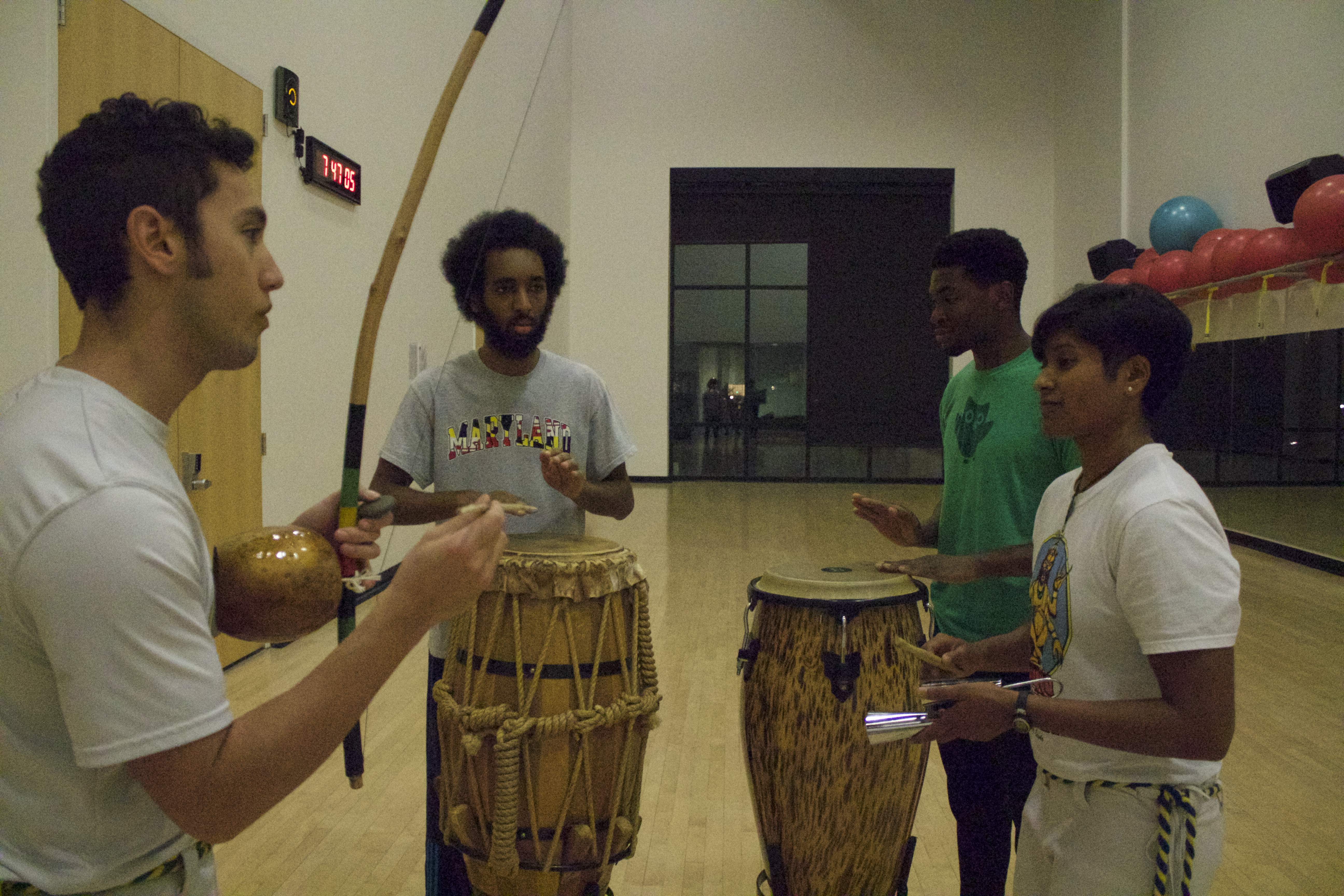“You can feel it like a painting or a sculpture… It’s hard to measure. It’s beyond words.” This is how “Sifu” Kenneth Chung describes wing-chun, a Chinese martial art brought into the public view by the film “Ip Man.” Ip Man was the legendary Hong Kong pioneer of wing-chun and the master of Bruce Lee. Chung was the student of a former trainee of Ip Man.
Chung is currently the grandmaster of the University’s wing-chun club, which, along with 10 other martial arts organizations, comprise the Stanford Martial Arts Program. Some of these clubs practice more common martial arts — taekwondo, wushu, judo and more. Others train in lesser-known martial arts like wing-chun and capoeira, an Afro-Brazilian sport that combines music and dance with fighting.
The world of martial arts is diverse, but, thanks to its portrayal in popular media, all of its variety often falls under the umbrella of “fighting.” In movies, we see the tropes of unarmed masters overpowering armed villains, underdogs taking revenge on bullies and epic leaps and flips between rooftops. However, these martial arts are far more than just physical manifestations of speed and power. They are laden with history, much like other forms of art.
Chung emphasized that this is a concept he overlooked when he started wing-chun in his teenage years. “I did not know what I was getting into. As teenagers, we tried to play around. We tried to be powerful. It was only after three or four years that I found out that the fastness and the power couldn’t satisfy me [as I searched] for the essence of wing-chun,” Chung noted. That essence, he surmised, lay in the philosophy behind wing-chun. The martial art was actually invented by a woman who, when faced with larger male opponents, could not simply overpower her antagonists. “Wing-chun is about sensitivity,” said Chung, and that, according to him, is part of what gives it depth and artistry.
A closer look into the history of wing-chun reveals that it, like any art, reflects its environment. Wing-chun grew rapidly in a mid-20th-century Hong Kong, which, according to Chung, was a crowded, closed place. He reminisces, “There was not much space in between people. You had this closeness, and wing-chun happens to be that you cannot work until you can touch hands… Environment plays a major part [in] all art. You cannot take art away from people.”
In this sense, a striking similarity exists between wing-chun and capoeira, a martial art developed by African slaves in Brazil. In form, the two arts are vastly different. Wing-chun revolves around set positions, simple movements and closeness to the opponent, and capoeira is much more free and interpretive, often with more than an arm’s distance between opponents. In comparison to other martial arts, “in capoeira I found more openness and more complex moves,” said Fahim Barmaki, a member of Stanford Capoeira. Megha Makam, an instructor at Stanford Capoeira, notes, “You have to practice capoeira, or dance it, or engage in it with a community… Capoeira is a game, and they call it a game for a reason. You have two people playing with each other, and they’re making a conversation with their bodies,” she said.
Yet, like wing-chun, capoeira has also been molded by the hands of those who have passed it down. Because slave-owners viewed slaves’ martial practices with wariness, its creators fit it to various folkloric songs, disguising it as a dance and spreading it among the communities of enslaved and emancipated Africans. Until the 20th century, it remained outlawed in Brazil, without the advantage of a formally recognized system of teachings. This perhaps contributed to the freeness of the art form. Makam mentioned, “[The master] takes a lot of creative license in the way he teaches and in the way he expresses the art form… As students, we can learn the foundations from our teachers, but the way we apply it … that’s totally open.”
Many practitioners of capoeira were in fact initially drawn to the art because of the beauty they found in its freeness. Two of Megha’s students, in fact, first fell in love with capoeira through a video game. “I used to play a video game called Tekken … and one of [the characters] is named after a Brazilian capoeirista, and the moves that he performed were beautiful and so dynamic… His style was really, really different. He would come from anywhere, use his hands on the ground and use different flips,” said Barmaki. His fellow practitioner, Mike Starr, notes the wide variation of the style of each player: “Some people like to play high, some people like to play low, some people like to fake a lot.”
This blurring of strict rules and boundaries is not a contradiction but rather a furthering of art in Makam’s eyes. “It’s not dancing, and it’s not martial. It is both,” she says.
As she begins to practice with one of her students, the truth of her words becomes evident. The partners spin and dodge and flip with grace and fluidity. They go through the same sequence again and again until they move in perfect rhythm and form, shaping and cleaving the air with their motions, creating an unspoken dialogue.
In this practice, it is clear that they are doing more than kicking and punching. They are demonstrating exactly how subtle, how delicate, how sensitive the martial arts are and how transient yet undeniable their creative expressions. They are, undoubtedly, artists, existing far beyond the cliches presented in the media, interwoven with hundreds of years of history.
Contact Angela Yang at ayang22 ‘at’ stanford.edu.
